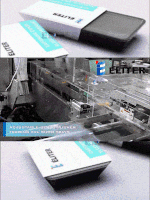Why brands don’t need to compromise consumer experience for recyclable packaging
2024-02-09
The role of food packaging in improving resource circularity has become more vital than ever as emphasis on sustainability increases around the world, especially in Europe. With this, many brands face the challenge of offering more sustainable packaging solutions without compromising consumer convenience or product safety. Consumer and market knowledge is essential to stay up to date with new sustainability requirements and have the ability to take advantage of innovations to incorporate them into the development of new solutions.

At Aptar Closures, we leverage several decades of experience revolutionizing markets around the world with breakthrough solutions and strong expertise and commitments to improve plastic circularity, in line with Ellen MacArthur’s New Plastics Economy Global Commitment. Our mission is to help brands innovate sustainably, meet new market demands, achieve bold environmental goals and become even more competitive, all with packaging solutions that don’t sacrifice the consumer dispensing experience.
Aptar’s SimpliCycle, a fully recyclable valve for use in dispensing closures, is a recent demonstration of Aptar’s commitment to sustainability without compromising performance. Like other flow control valves we have brought to market over the last 30 years, the SimpliCycle valve allows for clean, controlled dispensing of product throughout the life of the container. With SimpliCycle, consumers get a cleaner, more convenient squeeze of the product, while brand owners benefit from a fully recyclable closure.
Since its market introduction in 2022, SimpliCycle fully recyclable valve technology has been enthusiastically received in the European market. Multiple brands have already incorporated SimpliCycle into their food dispensing containers, especially for sauces, condiments, honey, spreads and functional beverages. This not only brings them one step closer to full packaging recyclability, but also allows them to stand out by offering a clean dispensing experience to their end consumers.

Recyclability guarantee
Made from a low-density thermoplastic elastomer (TPE), the valve floats when processed in the recycle stream, allowing it to be easily separated from the PET stream and recycled along with the PP/PE olefin stream. When assembled into an Aptar closure, SimpliCycle creates a fully recyclable solution for use with PET, PE or PP packaging.
In 2022, SimpliCycle was evaluated by third parties, such as Cyclos and Recyclass, confirming its compatibility with the sorting and recycling sectors available in Europe. In addition, SimpliCycle received the Critical Guidance Recognition from the Association of Plastic Recyclers (APR) of North America in 2022, a recognition that rewards packaging technologies or components that aim to solve long-standing problems in the design of sustainable packaging.
Convenience and cleanliness throughout the packaging life cycle
SimpliCycle was created for brands that want to differentiate themselves from the competition with a high-performance dispensing system that is fully recyclable and benefits consumers with a convenient and hygienic dispensing experience. An effective flow control valve ensures a constant flow of product and reduces spills and leaks during transport and use. It also allows the containers to be placed in an inverted position, so the product is ready to be dispensed. This also improves product evacuation so consumers can get that last bit of product out of the packaging.
SimpliCycle was developed to deliver clean dispensing throughout the life of the container. To highlight its value in terms of cleanliness, hygiene and consumer experience, we conducted a parallel dispensing test between SimpliCycle and a traditional deflector orifice with ketchup. A photo was taken after each squeeze until the container was empty. The image below shows the result after performing thirty-three consecutive product evacuations, indicating that SimpliCycle provides a cleaner cut of product, while the traditional deflector option often results in a “product queue” that builds up on the closing cover over time.




